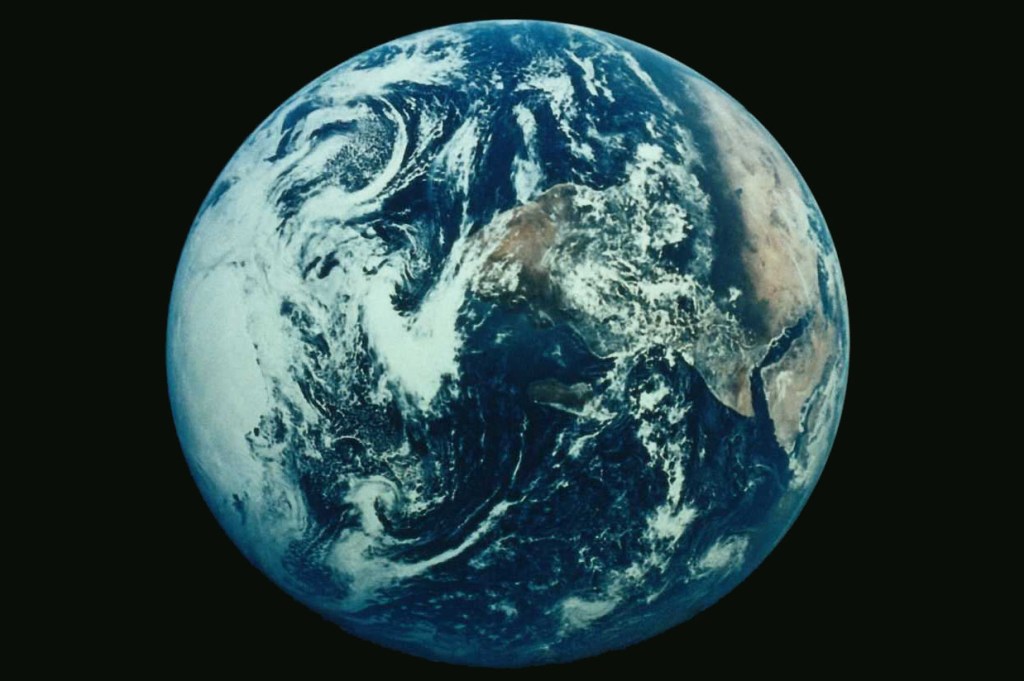The New York Times recently published a lengthy piece on the long- term ‘slide’ in world population with ‘plunging fertility levels’ and ‘sweeping ramifications’. How will the lower projected levels of world population affect climate change? Surely, if humanity is a blight on earth, as leading environmentalists assert — from the great naturalist David Attenborough who famously said that ‘humans are intruders’ to UN secretary general António Guterres who declared that ‘humanity is waging a war on nature’ — then surely the projected decline in world population by the end of the century should be welcome news.
But the Western environmental movement has come a long way from the earlier Malthusian concerns about ‘overpopulation’ and the ‘running out’ of minerals and energy resources as popularized by the systems theorists of the Club of Rome dabbling in early computer models of human futures.
It has now morphed into ‘climate change’ or, if you like, the current terms of choice, ‘climate emergency’ or ‘climate crisis’. These are terms used by the UK government — host of the UN’s planned climate conference in Glasgow this year — and the Biden administration, along with the teenage icon Greta Thunberg (‘our house is on fire’), the journalist David Wallace-Wells (the ‘uninhabitable earth’), and of course, the youthful Democrat Rep. Alexandria Ocasio-Cortez (‘our world will end in 12 years’).
It would seem that a Times article on declining global population in the second half of the 21st century is not going to change the climate alarmist narrative one bit. What you would have been presumed as ‘good news’ by Malthusian standards will now be just another passing blip of inconvenient reality in the climate change storyline.
You do not have to be too old an environmentalist to note that among the first warnings of an impending Armageddon was that raised by Paul Ehrlich. The author of the Population Bomb (published in 1968) starts his book with the apocalyptic first sentence: ‘The battle to feed all of humanity is over. In the 1970s and 1980s hundreds of millions of people will starve to death in spite of any crash programs embarked upon now.’ With hindsight, it was all tosh, of course, one of the many failed apocalyptic predictions over the past half century.
The global population saw its greatest increase in known history, from 1.6 billion in 1900 to six billion in 2000, as lifespans lengthened and infant mortality declined. In some countries — representing about one-third of the world’s people — those growth dynamics are still in play, as in Nigeria and elsewhere. But nearly everywhere else, the era of high fertility has long ended.
This is old hat to most demographers. Falling birth rates have been a major area of public policy concern in taxation and social security for decades in the developed countries. As women gained increasing access to education and contraception and as raising kids in two-income households became increasingly unaffordable options for many working households, more parents delayed pregnancy and fewer babies are being born. Even in countries long associated with rapid population growth, such as Saudi Arabia, India and Mexico, birth rates are falling sharply and often below the replacement rate of 2.1 children per family.
Demographers have long assumed that the world’s population growth would slow significantly in the first half of the 21st century, before stabilizing, then possibly shrinking by the end of the century. But recent indications suggest that population stability and shrinkage may come much earlier than previously forecast. Recent projections published in the Lancet suggest that by the year 2100 fertility rates will be below replacement levels in 183 of the 195 countries and territories in the world. The model employed projects that China’s population, currently about 1.41 billion, will fall to 730 million — or almost by half — by the end of the century; hence the Chinese government’s recent policy change allowing married couples to have up to three children, a change that seems unlikely to move the fertility needle much.
The dismal Malthusian visions of Ehrlich never came to pass; in fact, he could not have been more wrong in his predictions. With respect to human welfare, virtually every metric or indicator shows significant if not dramatic improvement: life expectancy and income levels have improved; poverty levels have declined; people are living longer and healthier lives and the World Bank’s human development index has advanced virtually everywhere. Average global life expectancy at birth in 1850 was just over 29 years; a century later it was over 45 years — and in 2019, it was almost 73 years. In 1820, 84 percent of the global population lived in absolute poverty. By 2015, this had dropped to 10 percent despite a sevenfold increase in world population.
What the ‘population explosion’ and ‘running out of resources’ were to the old environmentalism, the warming impact of greenhouse gases due mostly to the combustion of fossil fuels is to today’s version. The rallying cry (as per the IEA’s recently published ‘flagship report’) is ‘net zero (carbon emissions) by 2050’. The IEA, along with other multilateral agencies such as the World Bank and the IMF, has joined in a global move against new investments in oil, gas or coal from 2021. The favorite technologies these days are solar, wind and electric vehicles, along with a slew of allegedly ‘around the corner’ technologies such as climate capture and storage, hydrogen from electrolysis of water with power provided by renewable energy, and so on. (Curiously, nuclear — with zero carbon emissions — is not among the preferred technologies.)
Climate science is among the most complex of systems to model, given the literally thousands of variables and physical processes that are involved. According to the UN’s Intergovernmental Panel on Climate Change (IPCC), the ‘gold standard’ of climate science research, ‘the climate system is a coupled non-linear chaotic system — and therefore the long-term prediction of future climate states is not possible’.
In his masterful recently-published review of the climate science literature in Unsettled, Steve Koonin concludes that ‘humans exert a growing, but physically small, warming influence on the climate. The deficiencies of climate data challenge our ability to untangle the response to human influences from poorly understood natural changes… In short, the science is insufficient to make useful projections about how the climate will change over the coming decades, much less what effect our actions will have on it.’
Perhaps the last word on population growth and climate change more properly belongs to the late economists Ester Boserup and Julian Simon who were among the first to argue against the Malthusian demagoguery of the age by pointing out that humans create more than they destroy. Simon wrote prophetically in 1996:
‘There is only one important resource which has shown a trend of increasing scarcity rather than increasing abundance. That resource is the most important of all — human beings… [An] increase in the price of peoples’ services is a clear indication that people are becoming more scarce even though there are more of us.’
Even with fewer people on the planet towards the end of the century, innovation and human creativity — if unbridled by a censorious ‘settled science’ — will continue to bring about technological and material progress that has marked our history to date.
Tilak K. Doshi is an independent consultant and Forbes contributor. Peter A. Coclanis is Albert R. Newsome distinguished professor of history at the University of North Carolina-Chapel Hill.


















